Editor: Victor Trammell
Photo credits: ©2016 Brittany Starr
Artifacts attributed to the ancient vizier Ptahhotep were found in Kemet (Egypt). However, in that same country, there exists a book older than the Teachings of Ptahhotep.
It was called the incomplete instructions to Kagame. In the book, The Teachings of Ptahhotep: The Oldest Book in the World, Dr. Asa Hilliard, Larry Williams, and Nia Damali discuss this ancestor’s text. They write on pages 12 and 13:
“A vizier who served both Huni and Seneferu of the Third and Fourth Dynasties, respectively. This is followed by the instructions of Hardjedef, the prince, for his son Auilbre. Hardjedef was the son of Khufu of the 4th Dynasty and grandson of Senefuru.”
But Dr. Hilliard, Williams, and Damali explain in their book that the text to Kagame is not finished. They write:
“However, these instructions are very short and incomplete. So, the oldest complete set of instructions is the 37 Teachings or Instructions of Ptahhotep the oldest textbook in the world.”
Dr. Hilliard, Williams, and Damali also explain, in their book, that the spirituality of the Medu Neter is the basis for humanity’s concepts of the oneness of God, faith, prayers, the afterlife, fasting, charity, morals, and ethics. They write on page 11:
“The earliest Mdw Netcher (Medu Neter) writings describe Offering lists to the deity or to its manifestations and powers. Later prayers of offerings were substituted for the Offering list. These writings as with almost all writings in ancient Kmt (Kemet), emerged out of a profound religious orientation toward the world. This religious orientation found its expression in preparation for life after death or for the resurrection. However, what lost too many analysts is the fact that in the preparation for life after death or for the resurrection, the supplicant was articulating a set of values and a code of behavior by which to live one’s life in the world before death. No higher human behavioral code has been found anywhere in human history than the earliest code of the ancient Kemites.”
They further write on pages 11 and 12:
“Following the list of offerings and prayers, another form of writing appeared in the early dynastic period in Kmt (Kemet). In the temples and tombs prepared for decease persons, we find that there was concern that the deceased be able to say, on Judgement Day, that he or she had followed God’s will. Therefore, there emerged in the old kingdom the practice of writing down declarations of virtues. These declarations of virtues appear in the new kingdom, the 18th Dynastic Period, as the ‘Negative Confessions.’ In the popular form, there were 42 laws of these ‘Negative Confessions’ or ‘Declarations of Virtues.’ According to Biblical history, Moses was an Egyptian priest who was learned in all the wisdom of Egypt, wisdom literature that included the Per-em-Hru (the Book of Coming Forth From Darkness Into Light) or as it popularly called ‘The Book of the Dead.’ “Forty-two ‘Negative Confessions’ or ‘Declarations of Virtues’ are found in the book and bear a striking resemblance to the much shorter list of virtues which are stated as ‘[The 10] Commandants’ in the Old Testament.”
The First Moral Code in World Civilization
The 42 Laws of Ma’at are the oldest moral and ethical codes known to human beings. Ma’at, when translated from the Medu Neter into English, means for truth, justice, harmony, righteousness, order, balance, reciprocity, and propriety). Ma’at was found in the Pert Em Heru (The Book Coming Forth by Day), which the invaders of Afrika (i.e., Europeans and Arabs) call this text, “The Book of the Dead.” If you compare the Ten Commandments with the 42 Laws of Ma’at, you can clearly see similarities between the two. In the book, Nile Valley Contributions to Civilizations, Egyptologist Anthony Browder writes on page 92:
“By conservative estimates, the 42 Declarations of Ma’at were written approximately 1, 500 years before the writing of the Ten Commandments. By comparing the two documents, one will find striking comparisons. The following list reflects the numbering most used in English-language references to the Ten Commandments, and those which are similar to the Declarations (Ma’at) are highlighted by parenthesis.
1) I am the Lord thy God. Thou shalt have no other gods before me.” (41)
2) Thou shalt not make unto thee any graven images….
3) Thou shalt not take the name of the Lord thy God in vain…. (7, 37, 41)
4) Remember the Sabbath day, to keep it holy……
5) Honor thy father and mother. (1, 12, 28)
6) Thou shall not kill. (4)
7) Thou shall not commit adultery. (11, 20, 21)
8) Thou shall not steal. (2, 3, 5, 6, 7, 9, 39, 40)
9) Though shalt not bear false witness against thy neighbor. (8, 13, 18, 29)
10) Thou shalt not covet thy neighbor’s house or wife. (13, 20, 21, 29, 33)”
After reading the 37 points of wisdom from the teachings of Ptahhotep, he brings his knowledge full circle back to Ma’at in the end. He writes, “the wise person who acts with Ma’at is free of falsehood and disorder.”
We must remember that if Afrika is the birthplace of humanity, and it is, then the first people to create a high level of civilization were Black people of the Nile Valley. Out of the many societies of the Nile Valley, Kemet emerges as the greatest recorded civilization known to men and women in the history of the planet earth. Its culture influenced the cultures of Afrika, Europe, Asia, West Asia (the Middle East), the United States, Judaism, Christianity, Al-Islam, and the world. Kemetic people (Egyptian people) were the first people to explain the spiritual and secular world.
Dr. Cheikh Anta Diop, the great Afrikan Muslim Egyptologist, scientist, and historian, wrote in his remarkable book called, “The African Origins Civilizations: Myth or Reality, in 1976 the contributions Kemetic people (Egyptian people) made to human civilizations. He writes on page 14 of his introduction, “the ancient Egyptians were Negroes. The moral fruit of their civilization is to be counted among the assets of the Black world. Instead of presenting itself to history as an insolvent debtor, that Black world is the very initiator of the “western” civilization flaunted before our eyes today. Pythagorean mathematics, the theory of the four elements of Thales of Miletus, Epicurean materialism, Platonic idealism, Judaism, Islam, and modern science are rooted in Egyptian cosmogony and science. One needs only to meditate on Osiris, the redeemer-god, who sacrifices himself, dies, and is resurrected to save mankind; a figure essentially identifiable with Christ.
A visitor to Thebes in the Valley of the Kings can view the Moslem inferno in detail (in the tomb of Set I, of the Nineteenth Dynasty), 1700 years before the Koran. Osiris at the tribunal of the dead is indeed the “lord” of revealed religions, sitting enthroned on Judgement Day, and we know that certain Bible passages are practically copies of Egyptian moral text. “
In summation, as we seek out “new” facts about Afrikan history and culture to develop our own “woke,” (conscious) mind, please check out the teachings of Ptahhotep. They are one of many ancient Afrikan spiritual and philosophical texts in the world that exist to act as guidance to mankind and womankind. If we read and study the wisdom of our ancestors, and if this knowledge is applied correctly to our daily lives, they could be a foundation for Black liberation and human perfection.
Bashir Muhammad Akinyele is a History and Africana Studies teacher. He is also the co-coordinator for ASCAC’s (the Association for Study of Classical African Civilizations) Study Group Chapter in Newark, NJ. (https://ascac.org/)
Victor Trammell, Jr. is a digital media producer, freelance journalist, and author. He primarily covers current events for the Your Black World online news network. Mr. Trammell is also a graduate student taking up legal studies at Pepperdine University’s Caruso School of Law









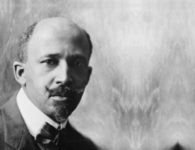
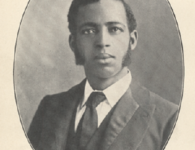



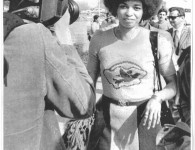
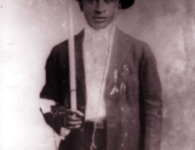
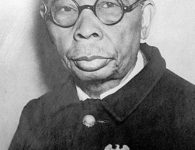


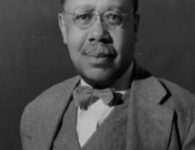

No comments